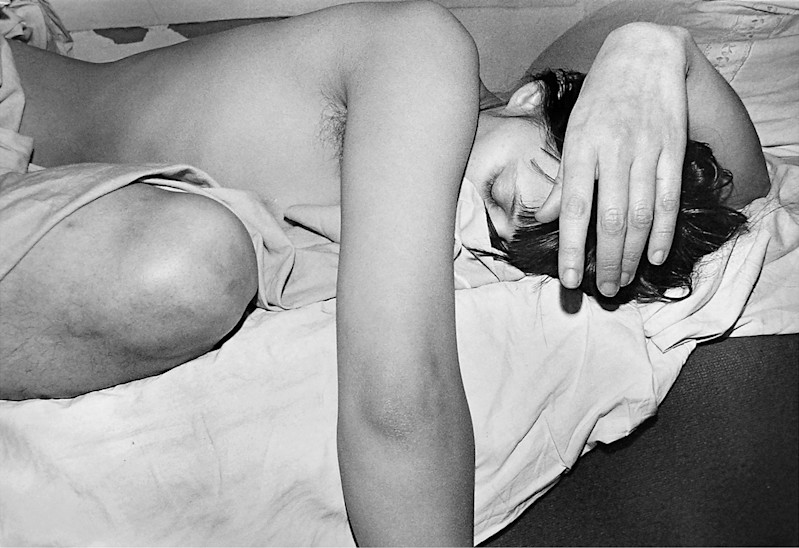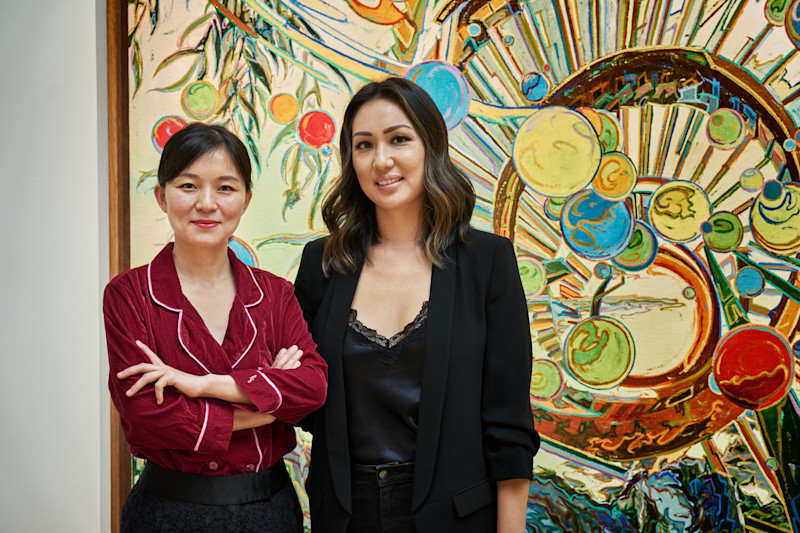The Camera as Extended Organ — An interview with Lotta Granqvist
Interview
February 19, 2019

What is the title of your doctoral thesis?
Its working title is The Camera as Extended Organ, which is a reference to the main focus of my thesis: an in-depth exploration of Klasson’s artistic method and the material results it has produced.
What made you choose to write about Eva Klasson?
I’ve long been interested in art theories that address topics such as corporeality, performativity, and materiality. When I first encountered Klasson’s idiom, I realised that her works have an enormous power to comment and build on these theories. My first experience of her works was an intense one. Now, I’m applying this experience, and art-theoretical perspectives, in my research, by following the many paths the images lead us along, pointing out similarities and differences between Klasson’s oeuvre and those of her contemporaries, and analysing her artistic method in depth.
Why do you think her pictures impacted the Paris scene , a sensation. It’s interesting to read the December 1976 review in Le Figaro, where her photographs are called genuine innovations of the genre, and where the critic berates the galleries for their failure to admit photography into the art world sooner. The reviewer, it turned out, was also a big name in contemporary art!
Le troisième angle was impeccable. Photography as an artistic genre in its own right was still a fairly novel idea, but many female artists had started to experiment with new mediums in art, including video and photography. Klasson, who spent many years as an assistant, copyist, and photographer, mastering the craft of photography, existed in between these worlds. I think the sensation was in part due to the fact that she came from the world of photography, but that what she presented defied all attempts at categorisation.

Eva Klasson, Untitled, from: Le Troisième Angle, Paris 1975, (2019), Gelatine silver print, 40 x 26,5 cm
The history of the Third Angle exhibition (incorrectly) claims that the pictures were shown at the Centre Pompidou in the 70s. You’ve carried out a rather meticulous survey. What actually happened?
There are many published lists of Klasson’s exhibitions, both in old and new reviews, and in online articles, as well as in a master’s thesis from 2013, and in various archives in Sweden and in France. The problem is that none of them seem to agree with each other fully. I’ve tried to track down all the exhibitions, as many as possible at their various locations, in order to ascertain precisely where Klasson was shown, and which works were included. When it comes to the exhibition at the Centre Pompidou, the only available evidence suggests that what was shown was her artist’s book Le troisième angle. (von Schantz Tylestam also writes this in her essay.) This is no better or worse than if it were the photographs that were shown; the book and the photographs belong to the same series, and the book adds another dimension to Klasson’s oeuvre.
What do you think made the pictures cause such a sensation at the time?
That’s a very interesting question! I’d say it was the craftsmanship and the subjects, as well as the hybrid nature of the works. But I can’t usefully comment on that without divulging the results of my research. I’ll have to get back to you when my book has been published!
Another artist who carried out photographic experiments far removed from the elite of the art scene at the same time that Eva did was the young Cindy Sherman. Do you see any commonalities there?
Nothing beyond the fact that they both worked in front of and behind the camera, and both used the same tools.
Sherman staged the stereotypical women of pop culture using costume and poses, while Klasson was trying to get as close as possible instead, reducing the body and revealing it unfiltered.

Eva Klasson, Untitled, from: Le Troisième Angle, Paris 1975, (2008), Gelatine silver print, 57 x 38 cm
Where would you place Eva Klasson in art history? What context does she belong to?That is an important research finding, which I’ve made as a result of my visits to various archives in Sweden, the USA, France, and Italy. I will present the context where I think she belongs quite extensively in my thesis, but the short of it is that I find Klasson quite difficult to place. Her works don’t obviously belong anywhere in particular, but that’s part of what makes studying them so exciting!
Many writers have mentioned reactions verging on shock. Was it a case of her subject, i.e., magnified body parts in isolation, being too innovative for the viewers?
Well, yes and no. Several feminist artists had already begun using the body as the subject and material for their work, and many of them did so in a far more explicit and in-your-face way than Klasson. Most of them had a stated political agenda, too. Klasson’s explorations of the body were based on a microscopic survey of all its various nooks and crannies, external as well as internal. Standing before something abstract and being simultaneously repulsed, fascinated, and intrigued by it, only to have it gradually dawn on you that what you’re seeing is an intimate depiction of a human eye, for instance – that can probably cause a bit of a shock! In a way, what you’re encountering is yourself, after all.



